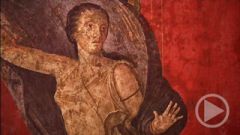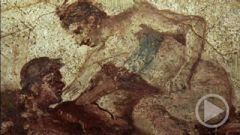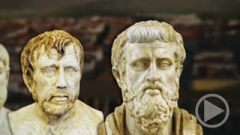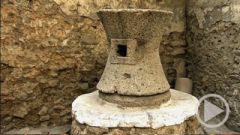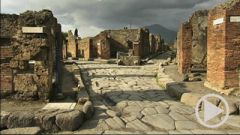Death and Destruction: The Great Catastrophe of AD 79
Death and Destruction – The Great Catastrophe of AD 79
But all that came to an end in the year 79. There were forewarnings of the calamity, according to Pliny the Younger:
"For many days before there were earthquakes, but hardly anyone was particularly alarmed because they are frequent in Campania."
Then, on August 24th, a cloud of ash rose suddenly from Vesuvius. Pliny compared its appearance to that of an umbrella pine tree. At twelve noon the disaster struck. A hail of pumice stone drummed down on the town. Panicked residents tied pillows to their heads. At this point it would have been possible to flee, but many hesitated. Who would protect their houses from plunderers?
Now the roofs are starting to collapse under the impact. The earthquakes increase in intensity. Now most of the Pompeiians try to escape – but not all of them make it out of the city in time.
In Herculaneum the streets are empty. At four o’clock in the morning a glowing avalanche races down the mountainside. Five more follow. More than 300 people seek shelter in the vaulted boathouses near the beach. A few gasps, and they die a quick death in the hellish heat. The fugitives in one garden in Pompeii also don’t have a chance. This father takes a last look at his wife and child – they are already dead.
After less than 24 hours two cities and numerous country estates had simply disappeared.
"Will future generations believe, when crops spring up once more and this wasteland grows green again, that cities and people are buried below and that ancestral fields vanished like this?"
The poet Publius Papinius Statius wrote that several years after the eruption. It took nearly seventeen hundred years for them to be rediscovered – the houses and temples, the pictures, mosaics, statues and bits and pieces – and above all, the people of Pompeii and Herculaneum who, in death, have told us so much about their lives.


